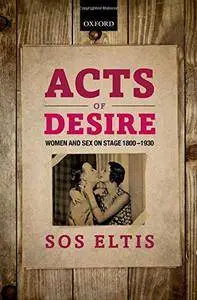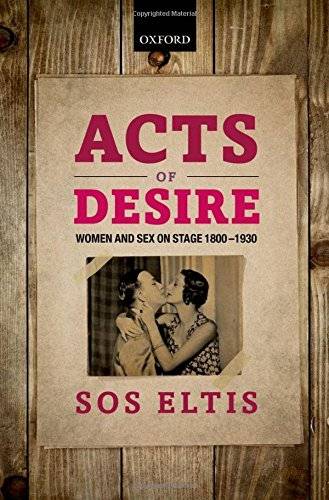Acts of Desire: Women and Sex on Stage 1800-1930 by Sos Eltis
2013 | ISBN: 0199691355 | English | 288 pages | PDF | 3 MB
2013 | ISBN: 0199691355 | English | 288 pages | PDF | 3 MB
From seduced maidens to adulterous wives, bigamists, courtesans, kept women and streetwalkers, the so-called 'fallen woman' was a ubiquitous and enduring figure on the Victorian and Edwardian stage. Acts of Desire traces the theatrical representation of illicit female sexuality from early nineteenth-century melodramas, through sensation dramas, Ibsenite sex-problem plays and suffrage dramas, to early social realism and the well-made plays of Pinero, Jones, Maugham, and Coward. This study reveals and analyses enduring plot lines and tropes that continue to influence contemporary theatre and film. Women's illicit desires became a theatrical focus for anxieties and debates surrounding gender roles, women's rights, sexual morality, class conflict, economics, eugenics, and female employment. The theatre played a central role in both establishing and challenging sexual norms, and many playwrights exploited the ambiguities and implications of performance to stage disruptive spectacles of female desire, agency, energy, and resourcefulness, using ingenuity and skill to evade the control of that ever watchful state censor, the Lord Chamberlain.
Covering an astonishing range of theatrical, social, literary, and political texts, this study challenges the currency and validity of the long-established critical term 'the fallen woman', and establishes the centrality of the theatre to cultural and sexual debates throughout the period. Acts of Desire encompasses published and unpublished plays, archival material, censorship records, and contemporary reviews to reveal the surprising continuities, complex debates, covert meanings, and exuberant spectacles which marked the history of theatrical representations of female sexuality. Engaging with popular and 'high art' performances, this study also reveals the vital connections between theatre and its sister arts, tracing the exchange of influences between Victorian drama, narrative painting and the novel, and showing theatre to be a crucial but neglected element in the cultural history of women's sexuality.



